A pet cat brings endless joy and happiness to the family. Your kids and feline pet can make excellent companions. But it is also important to teach your kids how to interact appropriately with your little cat. You can have a simple conversation with your older children, but you will need to teach some rules to younger ones because young children unintentionally play rough with cats, leaving them frustrated and aggressive.
Cats have sharp senses with sharp claws; they can quickly feel stressed or threatened by young kids if anyone tries to harm them. In the cat world, loud noises are often considered stressful and threatening. But don’t think that your little ones cannot make a good match with your furry feline. They both need the right circumstances and encouragement to become the best playmates!
Your young kid can have a cuddly time with your furry feline! Read this article because we have gathered some tips for how to teach your kids and cats to play safely.
Teach Your Child How to Respect a Cat
Whether we have relations with human beings or with an animal, respect always comes first to build strong relationships. Similarly, teaching your child how to respect a cat is the most important gift for your child and your pet cat. As a parent of your child and feline, you know when your cat feels scared and overwhelmed, teach these signs to your kid. Let your kids know when to leave your little cat alone and when not to touch her. Teach them about how to respect your cat’s feelings.
Set a Calm Environment
Cats are excellent readers; they can read your actions and vibes and pick a lot by your voice!
They can sense your good and bad mood just by your voice tone. If your child tries to interact with your cat, it is essential to set some calm boundaries in a relaxed manner. Let your kid call your kitty in a calm voice tone. Younger kids are energetic, and they can unintentionally make your cat scared with their loud voices. On the same note, teach children not to chase kitties because it will only create a game of fear for them.
Once your cat becomes familiar with your child’s voice, she will be more likely to approach your kid herself and interact with them.
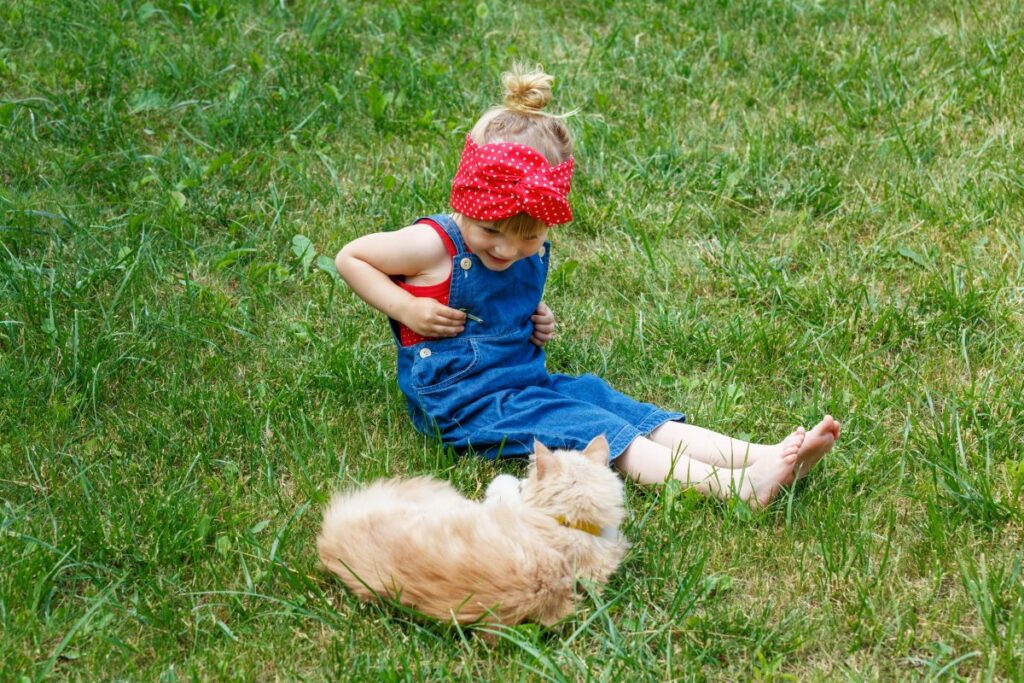
Build Up Some Time of Acquaintance
While trying to know the other person, it is important to build time to have a good acquaintance. The same goes in the feline world. When introducing your child to your new cat, it is important to keep some space between them to know each other best.
Don’t let your kid touch and approach your cat because, during the first few weeks, cats feel uncomfortable being around new faces and might not tolerate unfamiliar touches. Let your child slowly play with your cats with toys but don’t let your cat get too much noise and excitement. If, in some cases, they don’t stop doing these unusual behaviors, it will be best to give your cat some space by stopping the introduction session because the first impression tells a lot!
Teach Your Child How to Pet Gently
If your child is too young to distinguish between touches, show them an example of an open hand and a gentle soft stroke while petting your cat. Pay special attention to your baby and toddler, who commonly pat and poke cats trying to hold their fur skin. If needed, hold your toddler’s hand and ensure that he pets your cats softly with an open palm.
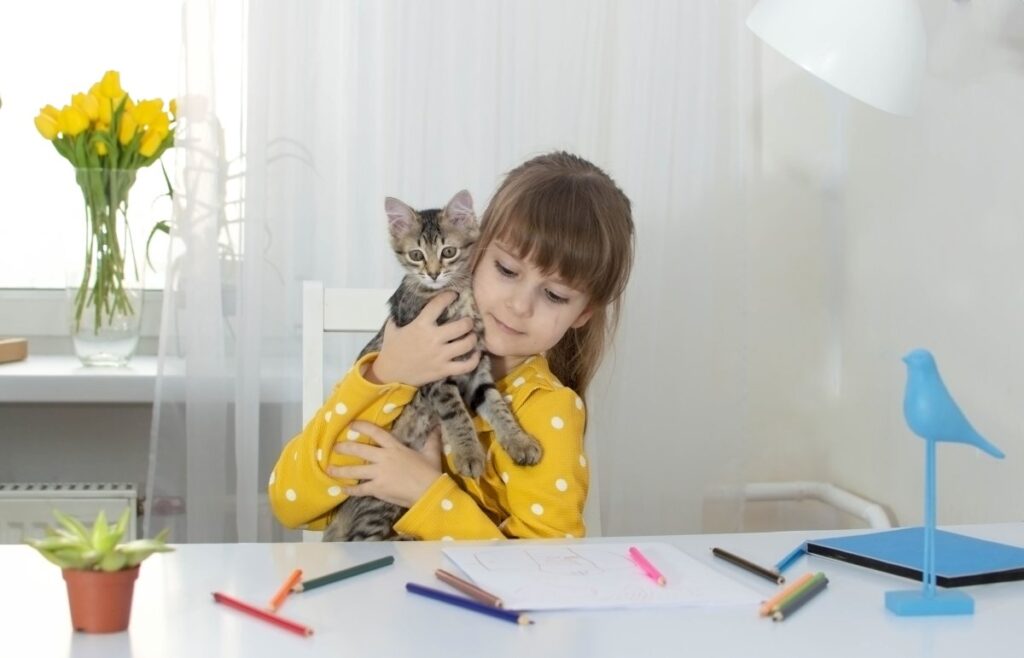
Let your child touch a cat only on her shoulder, back, head and neck because most cats tolerate touching on these areas rather than their belly, tail, paws, and face.
Teach Your Child About Cat’s Body Language
Help your child to recognize when your cat feels relaxed and when not. Teach them about the cat’s behavior when she feels happy and enjoys being petted; then, she is more likely to rub herself against your child’s hands or legs or lean in towards them. She may purr and may take her tail high and twitch the end.
Also, tell them about signs when they should not pet a cat, such as when the cat’s tail is fluffed out, or she lowers her tail to the ground or tucked underneath herself. An anxious or aggressive cat also takes her ears back and extends her claws.
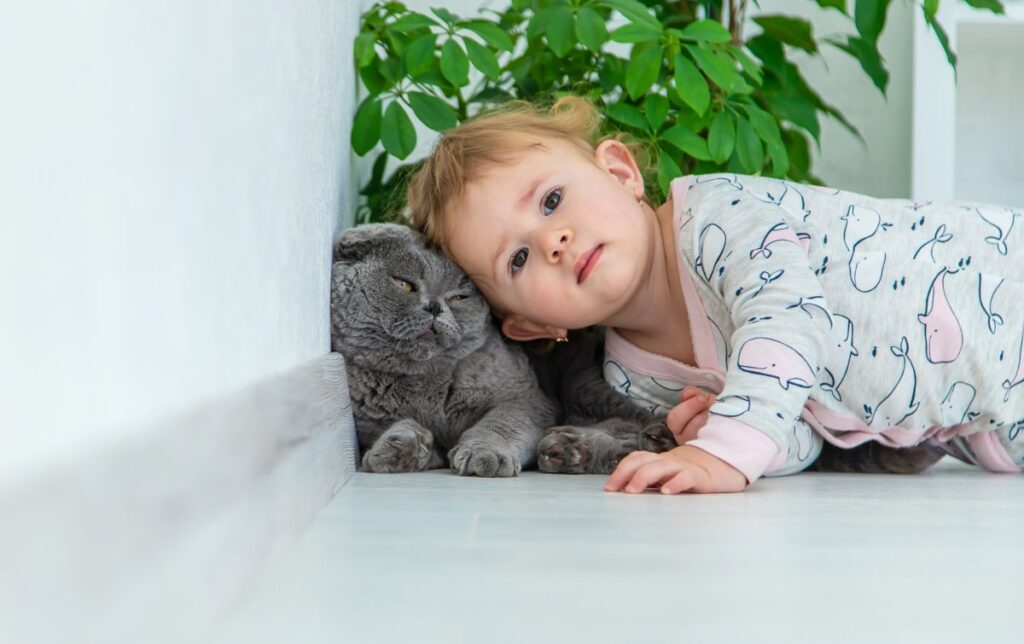
Give Your Cat Some Alone Time
If you want to make your cat feel more secure and safe around your kids and house, try to give her some private time and ample room, such as hiding spaces, cat trees, and high shelving. Don’t let your kid go alone in her area, especially when enjoying her time alone.
Keep Your Kid Engaged in Different Activities With a Cat
You can create a strong bond between your child and cat by encouraging your young kid to engage in activities that don’t involve direct handling, such as playing with cat toys. String or wand toys will give your child an opportunity to play with the little furry and keep the cat in the distance to get used to being around a new family. They will develop good acquaintances with all family members while having fun and burning off energy.
Ensure to provide your cat access to one specific area that is child-free where she can have food and water and help her interact and settle more quickly.
Wrapping Up
It is essential to set out some rules and boundaries between child and cat to keep them safe. Teach your children how to behave with animals; that is not only a responsibility for being a good pet owner, but you will also end up with happy pets!

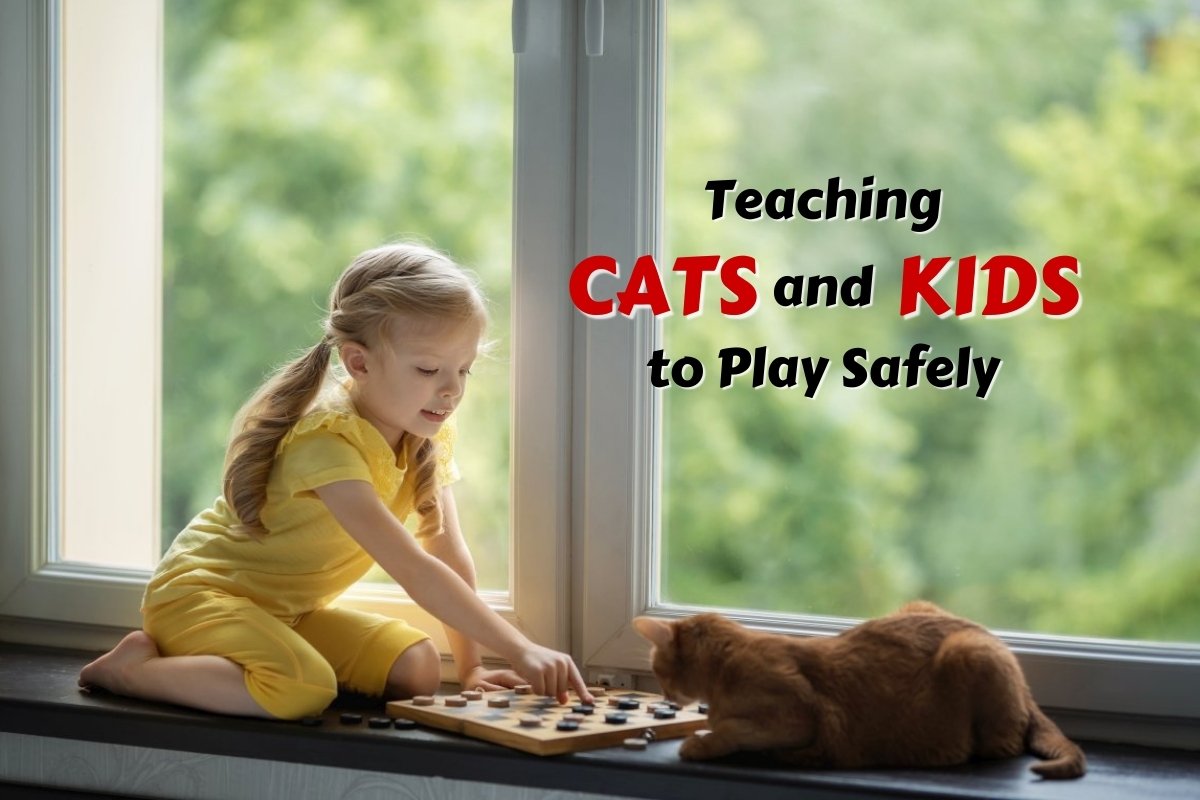




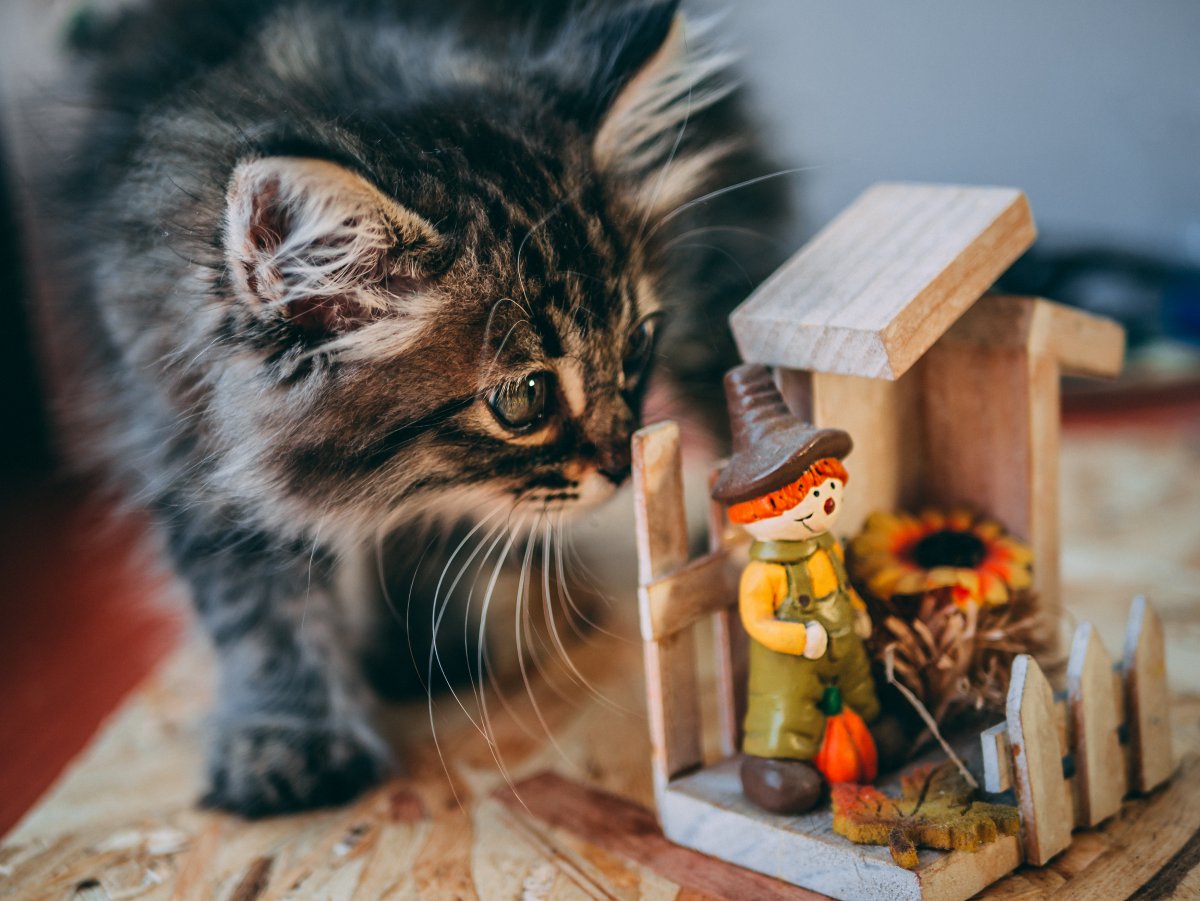
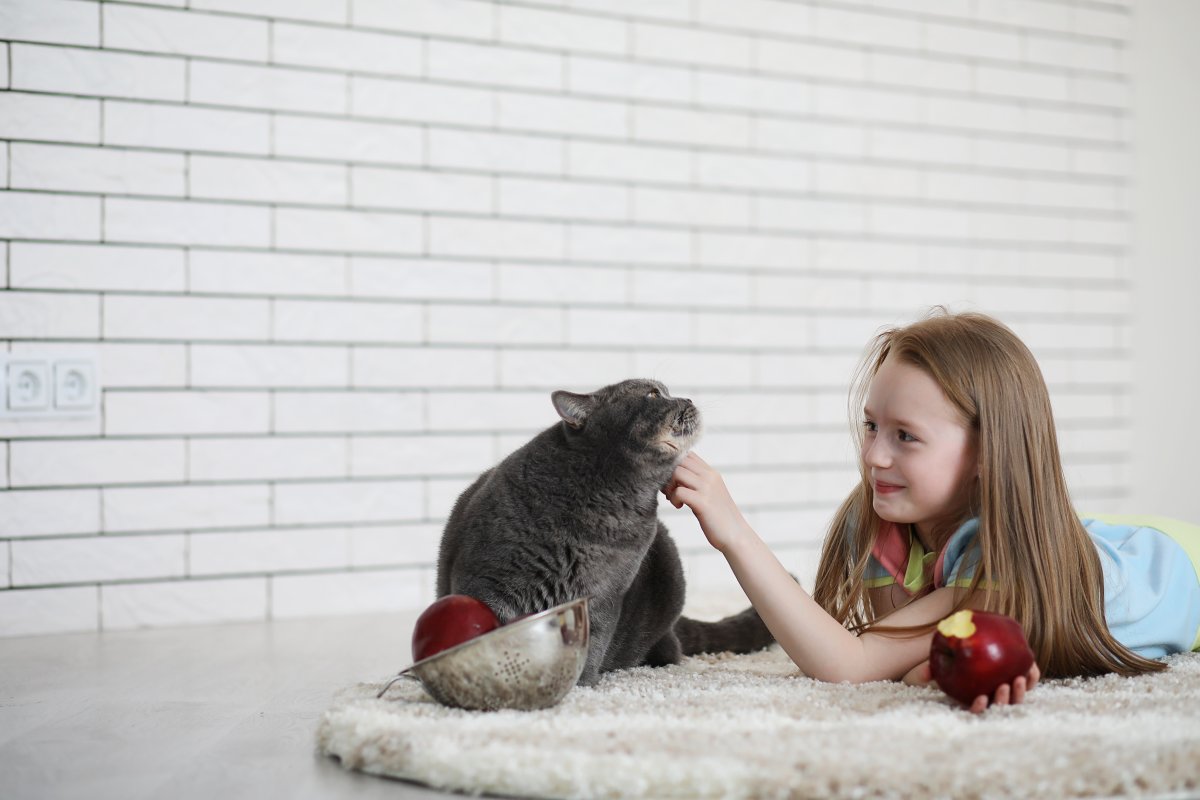
1 comment